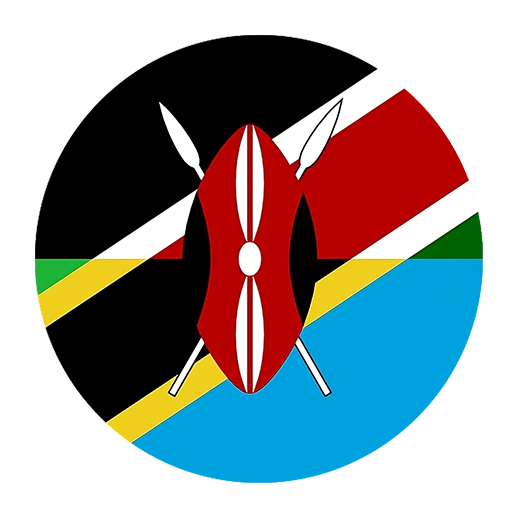Swahili, or Kiswahili as it is known in its native tongue, is a Bantu language widely spoken in East Africa. It is the lingua franca of countries such as Kenya, Tanzania, Uganda, and the Democratic Republic of the Congo. Understanding Swahili phonetics is a crucial step for any learner, as it forms the foundation upon which your speaking, listening, and reading skills will be built. In this article, we’ll delve into the phonetic structure of Swahili, breaking down its consonants, vowels, syllable structure, intonation, and more to help you master this beautiful and melodious language.
Consonants
Swahili consonants are generally straightforward for English speakers to grasp, though there are a few unique sounds that may require additional practice.
Common Consonants
Most of the consonants in Swahili are similar to those in English, with some minor differences:
– **B**: Pronounced like the ‘b’ in “bat”.
– **Ch**: Pronounced like the ‘ch’ in “chocolate”.
– **D**: Similar to the ‘d’ in “dog”.
– **F**: Like the ‘f’ in “fish”.
– **G**: Always a hard ‘g’, as in “go”. There is no soft ‘g’ sound as in “giraffe”.
– **H**: A softer sound than in English, similar to the ‘h’ in “hat”.
– **J**: Pronounced like the ‘j’ in “jam”.
– **K**: Similar to the ‘k’ in “kite”.
– **L**: Like the ‘l’ in “love”.
– **M**: Similar to the ‘m’ in “mother”.
– **N**: Like the ‘n’ in “nice”.
– **P**: Pronounced like the ‘p’ in “pot”.
– **R**: Rolled lightly, similar to the Spanish ‘r’.
– **S**: Like the ‘s’ in “sun”.
– **T**: Similar to the ‘t’ in “tap”.
– **V**: Like the ‘v’ in “victory”.
– **W**: Pronounced like the ‘w’ in “water”.
– **Y**: Similar to the ‘y’ in “yes”.
– **Z**: Like the ‘z’ in “zebra”.
Less Common Consonants
Swahili also includes a few consonants that are less familiar to English speakers:
– **Dh**: This is a voiced dental fricative, similar to the ‘th’ in “this”.
– **Gh**: A voiced velar fricative, somewhat similar to the ‘r’ sound in French or the ‘gh’ in some Scottish dialects.
– **Ng’**: A prenasalized voiced velar plosive, pronounced like the ‘ng’ in “sing”, but at the beginning of the word.
– **Ny**: Similar to the ‘ny’ in “canyon”.
– **Sh**: Like the ‘sh’ in “shoe”.
– **Th**: Pronounced like the ‘th’ in “think”.
Vowels
Swahili vowels are simpler than those in English, both in number and pronunciation. There are five vowel sounds, each of which is pronounced clearly and consistently.
– **A**: Pronounced like the ‘a’ in “father”.
– **E**: Similar to the ‘e’ in “bed”.
– **I**: Like the ‘ee’ in “see”.
– **O**: Pronounced like the ‘o’ in “more”.
– **U**: Similar to the ‘oo’ in “food”.
These vowels are always short and crisp, without the diphthongs that often accompany English vowels. For example, the ‘a’ in “cat” becomes a diphthong in some English accents, but in Swahili, vowels are always pure.
Syllable Structure
Swahili syllables are typically simple and follow a consonant-vowel (CV) pattern. Unlike English, which allows complex syllables with multiple consonants, Swahili syllables are more straightforward, which contributes to the language’s rhythmic quality.
– **CVC**: Example – “kitabu” (book), where “ki”, “ta”, and “bu” are individual syllables.
– **CV**: Example – “mimi” (I/me), where “mi” and “mi” are the syllables.
It’s important to note that each syllable is pronounced distinctly, and there are no silent letters. This means that even long words are easier to pronounce once you understand the syllable structure.
Stress and Intonation
Swahili is a tonal language, which means that stress and intonation can affect the meaning of words. However, unlike some other tonal languages, Swahili intonation is relatively simple.
Stress
In Swahili, stress typically falls on the penultimate (second-to-last) syllable of the word. For example:
– **kitabu** (book) – Stress is on “ta”.
– **rafiki** (friend) – Stress is on “fi”.
There are few exceptions to this rule, making it a reliable guideline for learners.
Intonation
Intonation in Swahili is used to convey different kinds of sentences, such as statements, questions, and commands. For instance:
– **Statements**: Generally have a falling intonation at the end.
– Example: “Ninakwenda shule.” (I am going to school.)
– **Questions**: Often have a rising intonation at the end.
– Example: “Unakwenda shule?” (Are you going to school?)
– **Commands**: Typically have a firm, falling intonation.
– Example: “Njoo hapa!” (Come here!)
Phonetic Variations
While Swahili is consistent in its pronunciation rules, there are some regional variations and influences from other languages that can affect phonetics.
Regional Variations
Swahili is spoken across a wide geographic area, and as such, there are some regional accents and dialects. For example:
– **Kenyan Swahili**: May have slight influences from local languages like Kikuyu or Luo.
– **Tanzanian Swahili**: Often considered the purest form due to its extensive use in media and education.
– **Congo Swahili**: Influenced by French and local Congolese languages.
These variations are usually minor and do not significantly alter the fundamental phonetics of the language.
Influences from Other Languages
Swahili has borrowed extensively from Arabic, due to historical trade connections, as well as from English, Portuguese, and German. These influences are mainly seen in vocabulary rather than phonetics, but it’s useful to be aware of them.
– **Arabic**: Words like “kitabu” (book) and “maktaba” (library) are borrowed from Arabic.
– **English**: Words like “baiskeli” (bicycle) and “kompyuta” (computer) are borrowed from English.
Common Pronunciation Challenges
For English speakers, there are a few common pronunciation challenges when learning Swahili.
Rolled ‘R’
Many English speakers find it difficult to produce the rolled ‘r’ sound in Swahili. This sound is similar to the Spanish ‘r’ and requires practice.
Prenasalized Consonants
Sounds like “ng'” and “ny” can be tricky. These require the speaker to blend nasal and plosive sounds, which is not common in English.
Vowel Consistency
English speakers often struggle with maintaining consistent vowel sounds, as English vowels are more variable. In Swahili, each vowel sound is pure and must be pronounced clearly.
Tips for Mastering Swahili Phonetics
Here are some practical tips to help you master Swahili phonetics:
1. Listen and Imitate
– Listen to native speakers as much as possible. Use resources like Swahili music, podcasts, and films to familiarize yourself with the sounds.
2. Practice Regularly
– Practice speaking daily. Use language learning apps, find a language partner, or join a Swahili speaking group.
3. Record Yourself
– Record your pronunciation and compare it with native speakers. This will help you identify areas for improvement.
4. Use Phonetic Resources
– Utilize phonetic charts and pronunciation guides. These tools can provide a visual and auditory reference for correct pronunciation.
5. Be Patient
– Learning a new phonetic system takes time. Be patient with yourself and celebrate small milestones.
Conclusion
Understanding Swahili phonetics is an essential step in becoming proficient in the language. With its straightforward consonants, pure vowels, and consistent syllable structure, Swahili is a language that is relatively easy to pronounce once you master the basics. By focusing on the unique sounds, stress patterns, and intonation, you can improve your pronunciation and comprehension skills significantly.
Remember, the key to mastering any language is consistent practice and exposure. Immerse yourself in the sounds of Swahili, practice regularly, and don’t be afraid to make mistakes. With time and effort, you’ll find yourself speaking Swahili with confidence and ease. Happy learning!

